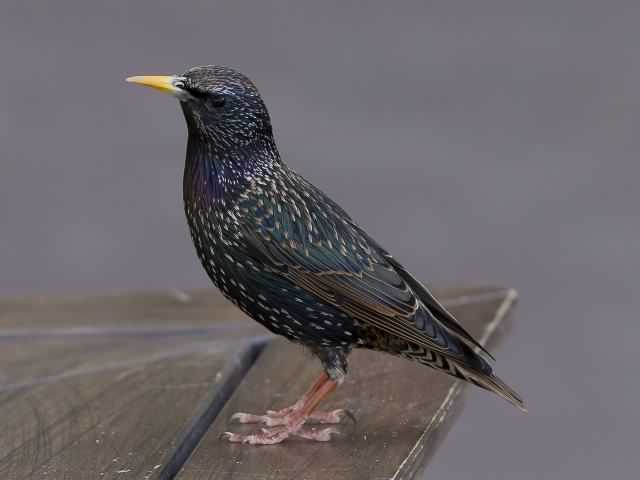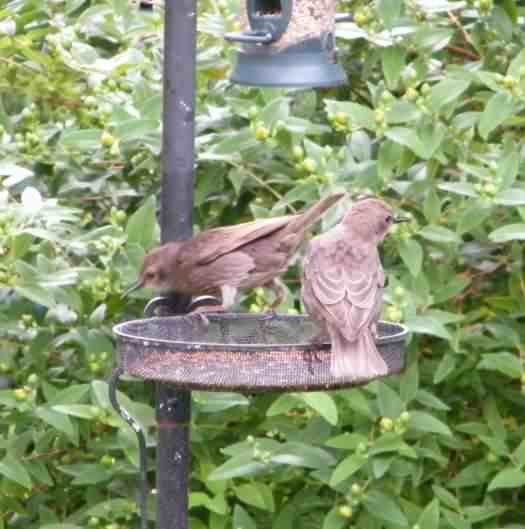
Adult, photo ©2012 Pierre Selim

Young Starlings, ©2013–

Adult, photo ©2012 Pierre Selim

Young Starlings, ©2013–
Starling - Sturnus vulgaris
Family Sturnidae, order Passeriforme
One of our most common birds in urban areas of the country, and to an extent in the countryside, well adapted to urban life which offering an abundance of food and nesting sites. Originally a Palaearctic region species it is now to be found over the whole of Europe, Australia, Central Asia and North Africa, and is an introduced species to the United States in about 1890 (originally 100 pairs, recently estimated at 140 million birds). Occasionally resident, the Starling migrates to Africa and Southern Europe in the autumn (September) forming very large flocks roosting in trees or on buildings, returning in March. European winter migrants boost resident flock numbers during the winter. Dominates localised areas, bickering with other birds and stealing food. Distinctive shape which is superficially similar to the Blackbird, but it has a short square tail, spiky bill, long wings, stocky body, dark iridescent plumage during spring and summer gaining white spots in the winter. its bill is dark in the winter and yellow in the summer, with a blue base denoting males and a pink base for females during the breeding season. Starlings have reddish coloured legs. Juvenile Starlings are completely brown gaining their adult plumage after the first autumn's moult. They live to three to four years, but two thirds of juveniles die within their first year.
Starlings are very aggressive driving native birds out of their territory, they are well noted for forming large flocks, often gathering in the tens of thousands. Along with Pigeons and Sparrows they are classed as an urban bird pest in the United States, being a nuisance in most areas due to their nesting, eating and living habits. When in large flocks thousands of starlings can overwhelm buildings and trees with a large scale buildup of faeces where the uric acid content causes corrosion to stone, metal and masonry. Gutters and down pipes clogged with starling nests often become blocked, leading to water damage. Bacteria, fungus and parasites in the faeces pose a health risk.
Starling have a varied song of warbling, gurgling, chirping and clicking noises, they often imitate many other species (animals as well as birds), and can imitate man made sounds (car alarms, telephones Etc.). Grows to between 16 and 22cm (6–8.5in), weighing 70 to 100g (2.5–3.5oz). The female builds an enclosed nest in old trees and other crevices of feathers, dry grass etc, assisted occasionally by the male. They will evict other species from a suitable nest to occupy it for themselves. Capable of producing up to 2–3 clutches a year (averaging eight offspring a year), the female lays 5–6 white to green blue eggs that are incubated for 12–13 days by both parents, the fledglings then leave the nest after a further 25 days. Both parents feed the young on worms, insects, larvae, berries and seeds depending on the time of year. Curing the winter they have a daily cycle of leaving the nest (usually on warm city buildings), at sunrise to travel up to sixty miles to feeding areas before returning for the evening.
The Starling is an Amber list species of medium conservation concern and moderate breeding population decline in the last 25 years.
Site design ©1999– Brickfields Country Park - Privacy -